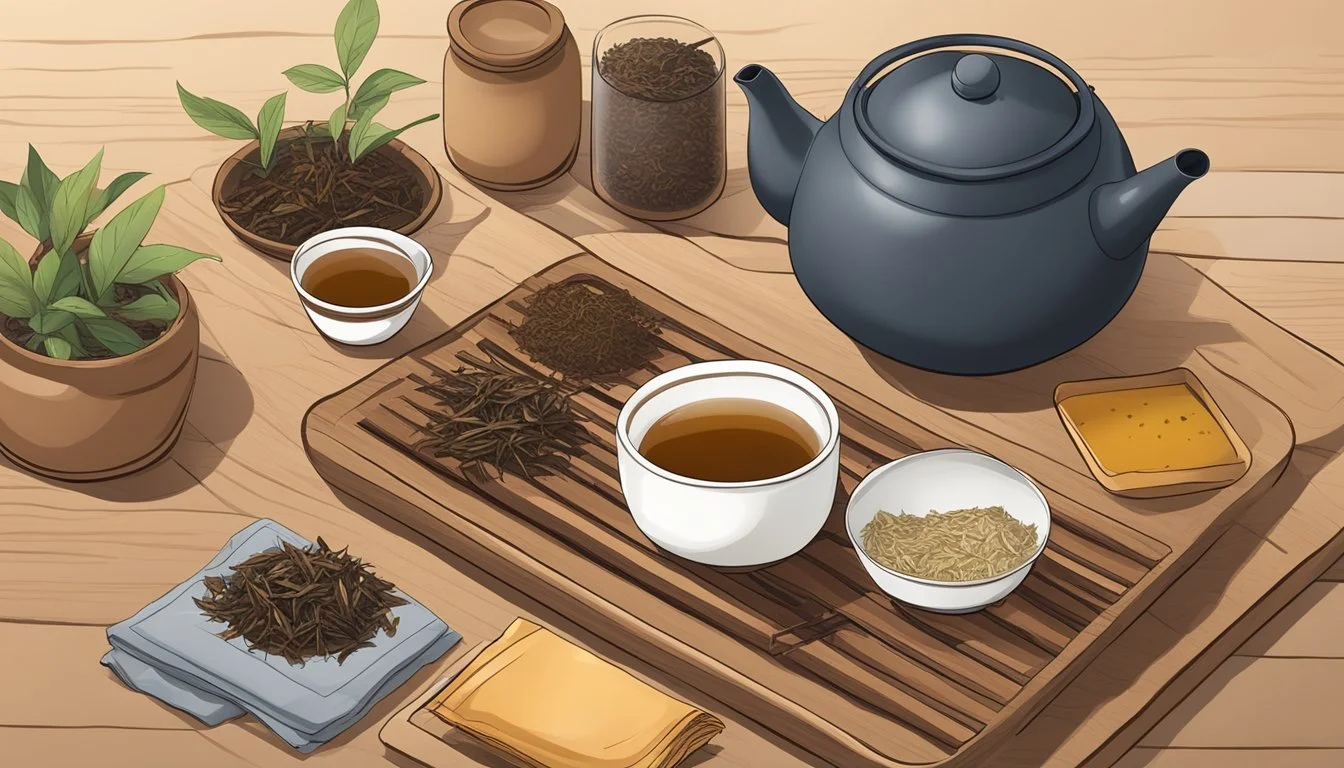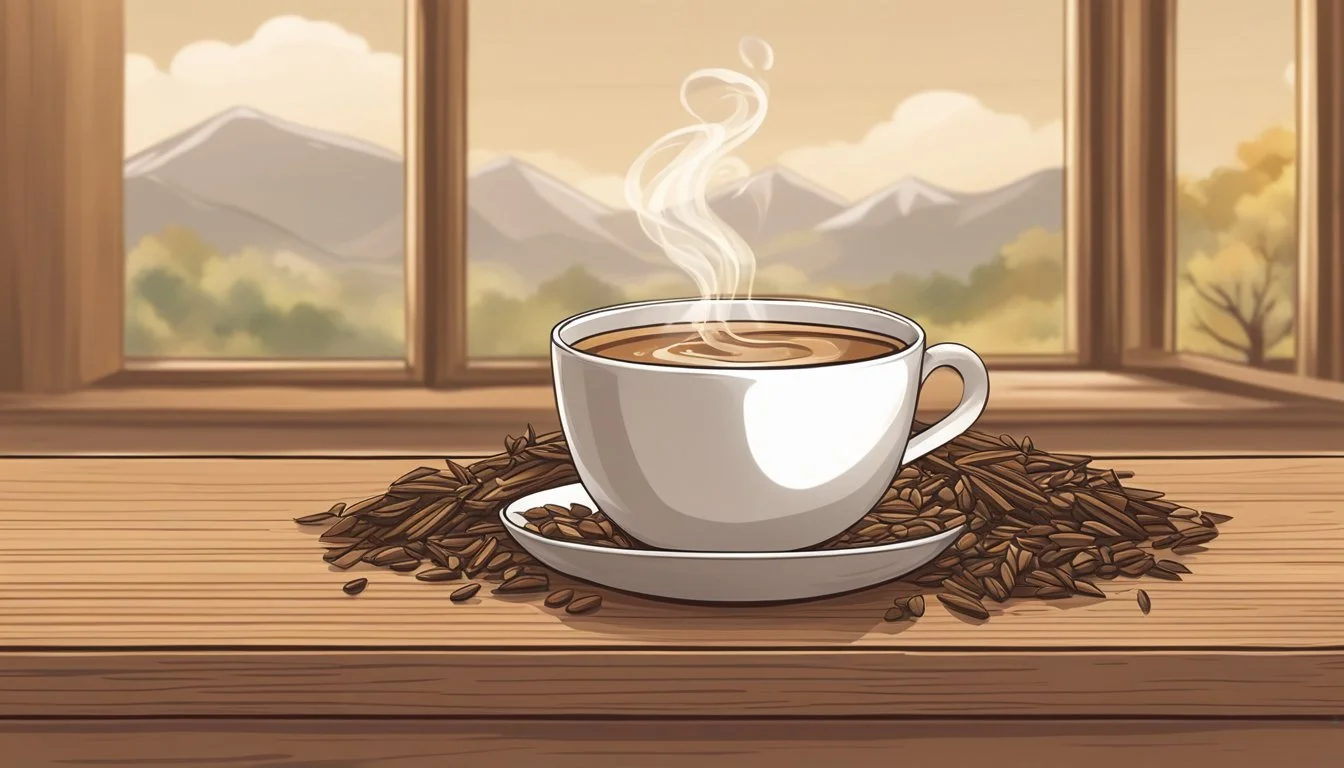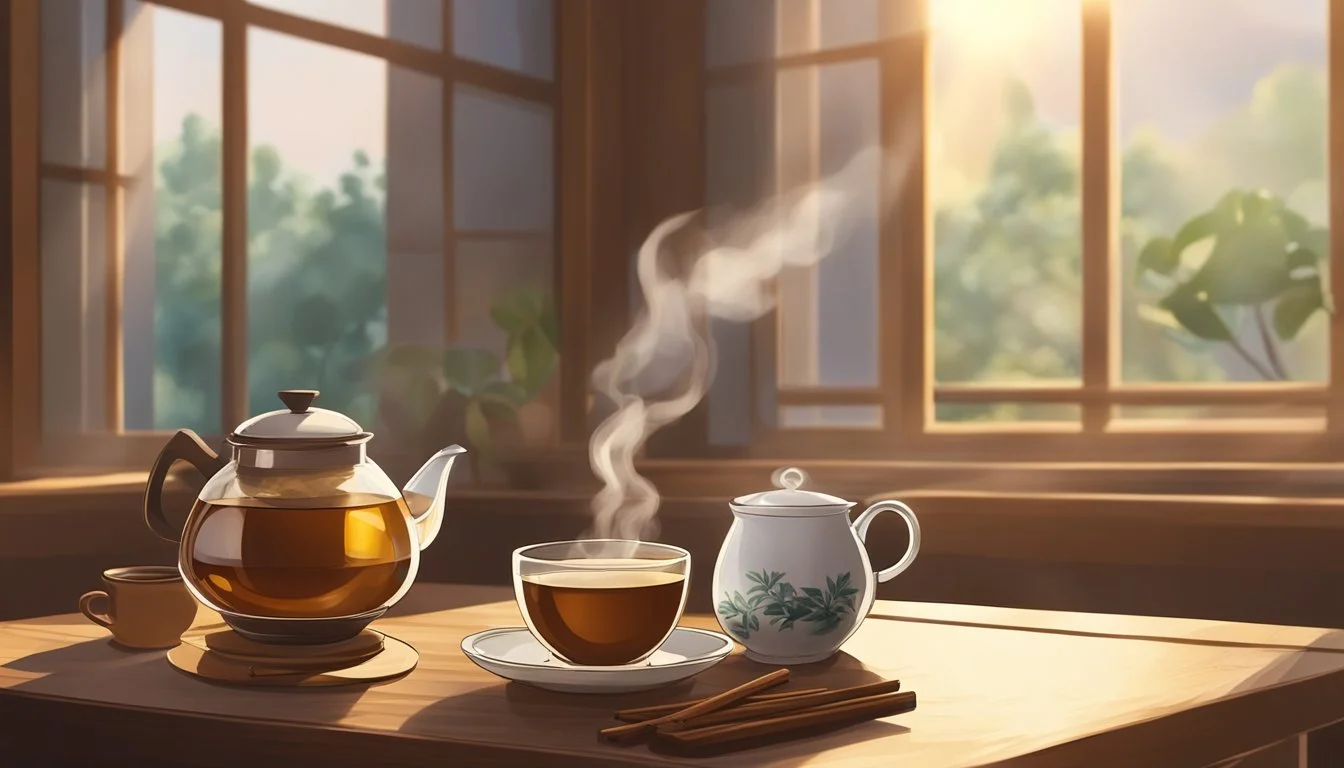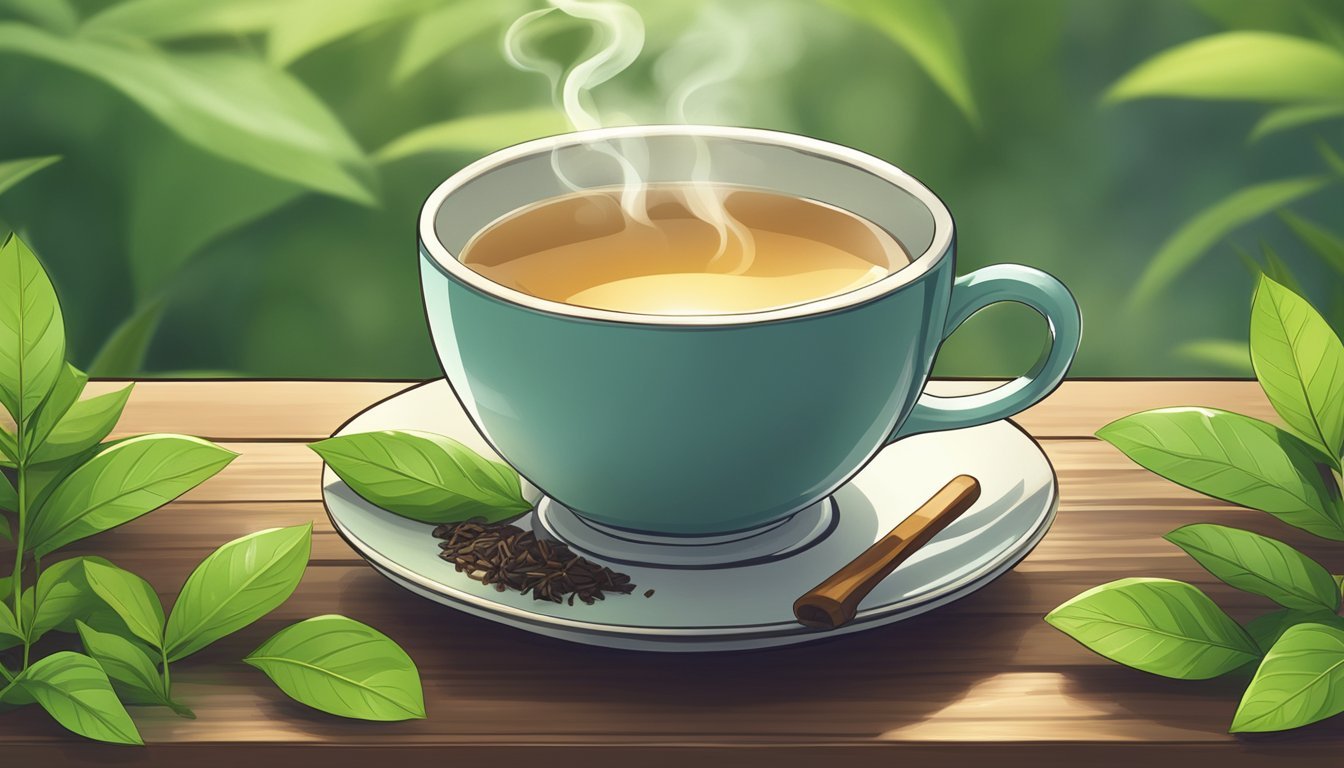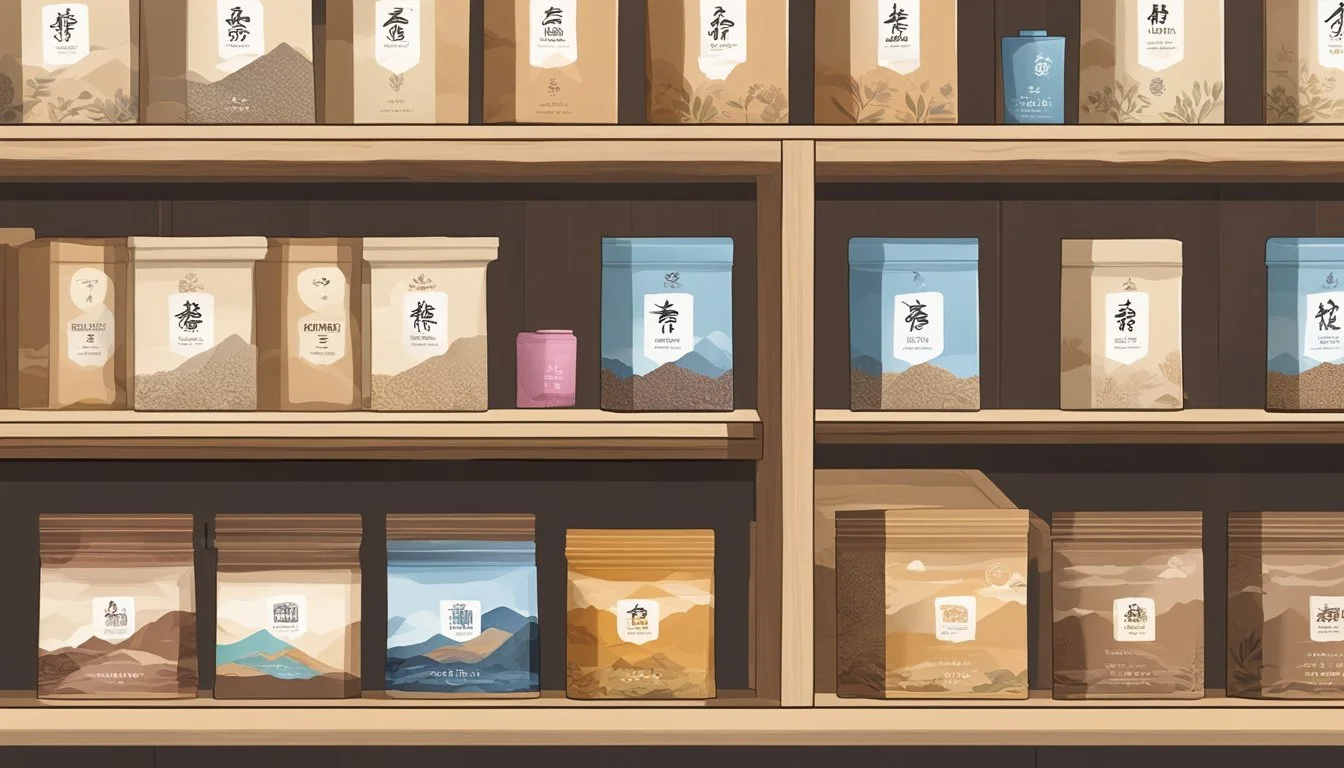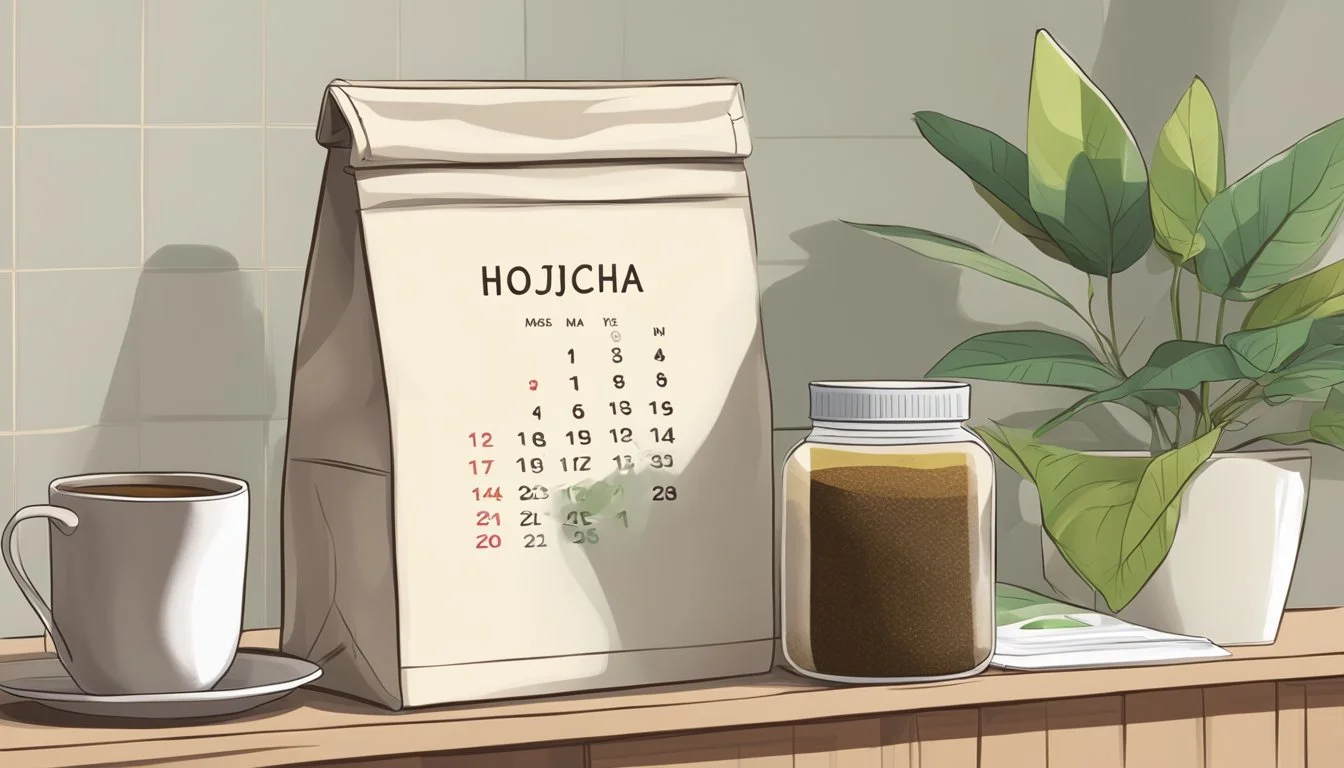How Long Does Hojicha Last?
Understanding Its Shelf Life and Freshness
Hojicha (how long does hojicha last?), a distinctive Japanese green tea roasted over charcoal, transforms the typical green tea into a reddish-brown brew with a smoky aroma and natural sweetness. Unlike other green teas, Hojicha's unique color and taste are a result of its preparation process. The roasting not only changes the tea's physical properties but also reduces the caffeine content, making it a popular evening beverage.
The shelf life of Hojicha, as with many teas, is influenced by several factors, including the way it is processed, stored, and handled. Generally, a properly stored Hojicha can maintain its quality for several months. It's crucial to store the tea in a cool, dark place away from moisture and stray odors, as these elements can degrade the tea's quality over time.
For tea enthusiasts, the question of how long Hojicha lasts is more than a matter of shelf life—it is a balance between preserving the tea's distinctive taste and making the most of its aromatic qualities. Understanding the factors that affect Hojicha's longevity helps in ensuring that each cup retains the special characteristics that make this tea revered in the art of tea brewing.
Understanding Hojicha
Hojicha is a distinctive Japanese green tea renowned for its reddish-brown color and smoky flavor, both products of its unique roasting process.
Origins of Hojicha
Hojicha originated in Kyoto, Japan, during the 1920s. A clever tea merchant decided to use surplus tea leaves, stems, and twigs from the final tea harvest of the season, which were then roasted over charcoal. This not only reduced wastage but also gave birth to a new kind of tea, which soon became popular for its pleasant roasted flavor and low caffeine content.
Defining Hojicha
Hojicha is a green tea from the Camellia sinensis plant. Unlike other Japanese green teas that are steamed, Hojicha is roasted in a porcelain pot over charcoal at high temperatures. This process alters the leaf color to a reddish-brown and imparts a smoky aroma and a natural sweetness to the tea. It's also characterized by a lower caffeine level, making it a favorite for those sensitive to stimulants. The roasting method not only differentiates it from other green teas but also contributes to its unique mellow, sweet, and toasty flavor profile.
Preparation of Hojicha
Crafting Hojicha involves a distinct roasting process that sets it apart from other Japanese teas like Sencha. The selection of suitable water for brewing is also crucial to extract its rich flavor profile.
Roasting Process
Hojicha is traditionally prepared by roasting bancha, sencha, kukicha, or a mixture of these teas, which may include twigs and stems. The roasting is done at high temperatures in a porcelain pot over charcoal, transforming the green tea to a reddish-brown hue. This process gives Hojicha its characteristic smoky aroma and a taste that is less astringent compared to unroasted green teas.
Suitable Water for Brewing
To brew Hojicha properly, hot water is essential. The recommended temperature is just below the boiling point, around 90°C (194°F), which helps in preserving its delicate flavors. Hard water or water with a high mineral content can adversely affect the taste, hence, soft water is preferred. A brief guideline for brewing Hojicha:
Water Temperature: 90°C (194°F)
Water Type: Soft water is recommended
Steeping Time: 30 seconds to 1 minute
The precise roasting of bancha, sencha, or kukicha, coupled with the optimal hot water temperature and quality, are pivotal for brewing the perfect cup of Hojicha.
Types of Hojicha
When exploring the varieties of Hojicha, it becomes apparent that its form significantly influences its application and brewing method
Flavor and Aroma Profile
Hojicha is a Japanese green tea that is distinguished by its roasting process, which yields a unique flavor and aroma. The roasting reduces bitterness and imparts a character distinct from other green teas.
Taste Qualities
The taste of Hojicha is often described in terms of its roasted qualities and mildness:
Roasted qualities: The roasting process is fundamental to Hojicha's profile, imbuing the leaves with a nutty flavor and a caramel-like quality.
Mild Flavor: Compared to other green teas, Hojicha's flavor is more subdued and less astringent, making it smoother.
Aroma Characteristics
Hojicha's aroma complements its taste, presenting a warm and inviting sensory experience:
Smoky Aroma: The tea's scent is easily identifiable by its smoky aroma, a direct result of the roasting process.
Natural Sweetness: An underlying natural sweetness in its aroma, which may resemble a light, toasty scent with hints of caramel.
Hojicha Applications
The versatility of hojicha allows it to be a delightful addition to both beverages and culinary creations, providing a unique roasted flavor that enriches the taste experience.
In Beverages
Hojicha is commonly infused into a variety of beverages. A popular choice is the hojicha latte, a milky drink that combines the rich, smoky taste of hojicha with the creaminess of milk. It can be served hot or as an iced version, catering to different preferences.
Preparation of Hojicha Latte:
Sift hojicha powder using a matcha sieve.
Whisk the hojicha powder with a small amount of warm water until fully dissolved.
Add the preferred amount of warm or cold milk, such as soymilk, oatmilk, or almond milk, making it easily vegan-adaptable.
Hojicha can also be enjoyed in smoothies, adding a distinctive toasted flavor profile that complements many ingredients. Moreover, specialty beverage shops like Henji Co often release seasonal hojicha-inspired drinks, indicating its growing popularity.
Hojicha in Food
In Japanese cooking, hojicha is not only a beverage but also an integral component in desserts and baking. It imparts a unique essence that adds depth to the taste and aroma of the final product.
Desserts: Hojicha is utilized in making desserts such as hojicha jelly, a delicate and flavorful Japanese dessert. The tea adds a nuanced flavor and can be used as a gelatin flavoring or as a powder sprinkled atop desserts.
Ice Cream: Artisan ice cream makers might infuse hojicha into their creations, crafting a smoky, tea-flavored ice cream that's both refreshing and indulgent.
Baking: Bakers can incorporate hojicha powder into recipes for cookies, cakes, and pastries. This adds not only a distinctive taste but also a charming, reddish-brown hue to the baked goods.
The use of hojicha in food highlights its adaptability in various recipes, including those that are vegan, by simply substituting any animal-based ingredients with plant-based alternatives.
Health Benefits and Caffeine
Hojicha tea is notable for its health benefits, particularly in its antioxidant activity, while also offering a lower caffeine content compared to other teas.
Health Considerations
Hojicha boasts significant antioxidant levels, which are critical in fighting oxidative stress and may contribute to overall health. The roasting process inherent to Hojicha's production alters its chemical composition but maintains, if not enhances, its antioxidant properties. These antioxidants include catechins, which have been linked to various health improvements such as supporting cardiovascular health by regulating blood pressure and cholesterol. Additionally, Hojicha contains l-theanine, an amino acid that contributes to the tea's stress-reducing qualities by promoting relaxation without drowsiness.
Caffeine Analysis
The caffeine content in Hojicha is lower than that of other traditional green teas due to the high temperatures used during the roasting process. On average, a cup of Hojicha might contain approximately 7 to 10 mg of caffeine, significantly less than the 30 to 50 mg found in a typical cup of green tea. This makes Hojicha an appealing choice for those looking to reduce their caffeine intake without entirely eliminating it from their diet. Despite its lower caffeine levels, the presence of l-theanine modulates the stimulant's effects, potentially offering a calm, focused alertness without the jitters often associated with high-caffeine beverages.
Storage and Shelf Life
When it comes to hojicha, maintaining its roasted aroma and flavor is paramount. Proper storage significantly extends its shelf life, while improper handling can lead to a faster degradation of quality.
Proper Storage Methods
To preserve hojicha at its best, one should store it in an airtight container. This method prevents exposure to oxygen, which can stale the tea. The storage location should be cool, dry, and kept away from direct sunlight to protect the delicate leaves from degradation.
Airtight Storage: Use containers with a sealable lid to keep air and moisture out.
Cool and Dry Conditions: Avoid places with high humidity or temperature fluctuations.
Storing in the refrigerator can be an option, provided the hojicha is sealed tightly to guard against moisture and other food smells. If the tea is in powdered form, it should be kept away from liquid to prevent clumps.
Expiration and Freshness
An unopened package of hojicha will generally remain fresh for at least one year. The roasting process extends its shelf life compared to unroasted green teas. However, once opened, enjoying hojicha within three months is ideal for optimal taste.
Unopened Shelf Life: Up to or over a year depending on storage conditions.
After Opening: Best consumed within three months for maximum freshness.
Signs of staleness include a diminished aroma and a less vibrant flavor profile. It is still safe to drink hojicha past its peak freshness, but the sensory qualities may be compromised.
Brewing the Perfect Cup
To achieve the ideal Hojicha experience, mastering the brewing process is essential. The type of water used and the brewing technique have significant impacts on the final taste.
Brewing Techniques
Hot Brew: For a hot cup of Hojicha, begin with filtered or spring water to enhance the tea's flavor. Heat the water, but not to boiling, as this can make the tea bitter—a temperature just below boiling is recommended. Use about 1.5 teaspoons of Hojicha leaves for every 8 ounces of water. Steep for approximately 2 minutes, using a teapot with a strainer.
Step Action Tool Note 1 Heat Water Electric kettle with temperature setting Avoid boiling 2 Measure Leaves Tea scoop Approximately 1.5 teaspoons 3 Steep Teapot with strainer For 2 minutes 4 Serve Tea bowl Enjoy immediately
Cold Brew: For a cold alternative, use 2 teaspoons of loose Hojicha or 1 tea sachet per cup of cold filtered water. Allow steeping for about 8 hours in the refrigerator. The colder temperature extracts a mellower flavor, making it a refreshingly different experience from the hot brew.
Customizing Hojicha Drinks
Iced Hojicha Latte: Steep Hojicha as for a hot brew, then let it cool. Fill a glass with ice, pour the cooled tea over, and add your preferred type of milk. Adjust sweetness with a sweetener of choice—honey or sugar syrup accentuate the tea's roasted taste without overpowering it. Use a bamboo whisk or chasen to mix if available, ensuring a smooth texture.
Sweeteners and Flavorings: Customization can also come in the form of various sweeteners or flavorings. Experiment with the amount to personal taste. Just remember, the key is to complement the tea's natural flavors, not dominate them.
Comparing Hojicha with Other Teas
When exploring the longevity of hojicha tea, it's essential to understand how it differs from other teas, including matcha, other Japanese green teas, and various tea types, as these differences can affect shelf life.
Hojicha vs Matcha
Hojicha tea is a Japanese green tea that differs significantly from matcha. While hojicha is roasted, which gives it a reddish-brown color and a smoky flavor, matcha is a fine powder made from shade-grown tea leaves, presenting a vibrant green color with a delicate, grassy taste. Hojicha's roasting process reduces its caffeine content and produces a flavor that tends to mellow and improve over time, potentially extending its shelf life compared to matcha powder (how long does matcha powder last?), which can quickly degrade and lose its potency if not stored correctly.
Hojicha and Other Japanese Green Teas
Compared to other Japanese green teas, such as sencha or gyokuro, hojicha boasts a lower caffeine level due to the roasting process. The roasting also imparts a nutty and caramel-like flavor, distinct from the fresh and vegetal notes found in unroasted green teas. This roasting not only contributes to a unique flavor profile but also changes the tea's preservation qualities, allowing hojicha to maintain its quality for a longer period when stored properly, shielded from light and moisture.
Hojicha vs Other Tea Types
Hojicha's flavor and shelf life vary when compared to other tea types like oolong or black tea. Oolong tea, which is partially oxidized, shares a middle ground in terms of oxidation between green and black teas, offering a wide range of flavors, but usually has a shorter shelf life than hojicha due to its delicate nature. Black tea is fully oxidized, which leads to a robust flavor that can endure for a considerable time. However, hojicha's roasted quality allows it to maintain its characteristic flavor, possibly outlasting even black tea's prime tasting period under optimal storage conditions.
Purchasing Tips
When selecting Hojicha, knowing where to source and what indicates quality is essential for obtaining a premium Japanese tea that provides the best flavor and longevity.
Identifying Quality Hojicha
One should look for Hojicha that has a uniform color indicative of even roasting. Quality is often reflected in the aroma; a good Hojicha will have a rich, toasty fragrance. The tea leaves should originate from a reputable region in Japan, such as Fukuoka, where tea cultivation is held to high standards. Premium Hojicha will also have leaves that are well-roasted but not burnt, ensuring a comforting, toasted flavor without astringency.
Tea Appearance: Look for a balanced color, without overly dark or green leaves. Aroma: Expect a robust, toasty, and slightly sweet smell. Region: Prefer Hojicha from regions known for high-quality tea production. Roast Quality: The leaves should exhibit signs of careful roasting—neither under nor overdone.
Where to Buy
Quality Hojicha can be found in specialty tea shops or through online retailers specializing in Japanese tea. When purchasing Hojicha, opting for dedicated tea vendors over general marketplaces can lead to finding a higher quality product. Check the vendor's reputation, customer reviews, and ensure they provide detailed information about the tea's origin, processing, and recommended brewing guidelines.
Specialty Tea Shops: They often provide a curated selection and knowledgeable staff.
Online Retailers: Look for those specializing in Japanese tea with transparent sourcing.
Reputation and Reviews: Consider the overall reputation of the vendor and read customer feedback carefully.
Product Information: Detailed descriptions signal confidence in and knowledge about the tea.
Conclusion
When properly stored, Hojicha can last quite a while. Unopened and stored in a cool, dark place, one can expect Hojicha to maintain its quality for up to one year. Once opened, however, it's best to consume within 3 to 6 months to enjoy its optimal flavor. Here's how to keep it fresh:
Storage: Keep it in an airtight container, away from light, moisture, and strong odors.
Environment: A cool, dark cupboard or a refrigerator can extend its freshness.
Hojicha's roasted qualities mean its flavors are more stable over time compared to green teas that aren't roasted. Nevertheless, a gradual loss of flavor and aroma is natural. Signs that Hojicha is past its prime include:
Lack of aroma
Muted flavors
If Hojicha develops an off smell, taste, or shows signs of moisture, it should be discarded. To ensure one enjoys their Hojicha at its best, they should consider:
Buying Smaller Quantities: More frequent purchases can mean fresher tea.
Checking Packaging Dates: Purchase tea closer to its packaging date.
In summary, while Hojicha is more forgiving than many unroasted green teas, proper storage and timely consumption will ensure the best tea experience.




